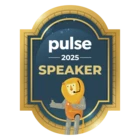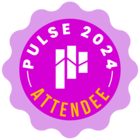Sure thing.
The problem: Our main issue was that we had renamed username to “Full Name” and so there were thousands of users from our previous community (and first 6 months) that were using their full name as their user name. When you switch from Public to Private (or Hybrid), profile pages are exposed and there’s no way to restrict access to those.
We wanted to do right by our users and not expose their full name as community members without their permissions.
The solution:
- Proactive communication
- Time - we allowed a month to pass with the above before we made the change
- Anonymizing legacy users who had been inactive for x+ days (sorry, i don’t recall)
- We did this via the API
- We changed names like Jane Doe to Jane D
- We removed profile avatars if they previously had one
- We added a custom role, so we could track which users we had done this to (some have re-engaged since and are active again. None have noticed their username changed.)
#3 is the key one. If someone is active, your posts and emails are enough of an effort. They can’t say they weren't told. But if they’re inactive, you don’t know that their message reached them. So we went ahead and anonymized. Better safe than sorry.
We chose not to erase those inactive users, because we wanted to keep their posts, points, etc in case they came back (some did). And we had 2+ years of answered questions from our previous community and first 6 months on insided, we didn’t want thousands of answered questions to be from “Anonymous User.” That sends the message that the community isn’t active or vibrant or filled with actual people.
Note: Username was really the only publicly visible profile field other than avatar, so that was our focus. However, the public nature of profile fields has held us back from making more fields visible. There’s no way to make them visible for only logged-in community members while blocking those logged-out. I’ve given Insided the feedback that I’d like this to be improved so we can have fields like company, title, expertise, etc visible to other community members, but not the whole world.
(Since this is marked as an answer, adding the recording of the webinar I did with Insided)
https://gainsight.hubs.vidyard.com/watch/Q3LgJWJuyCByHL4NzicaGa


